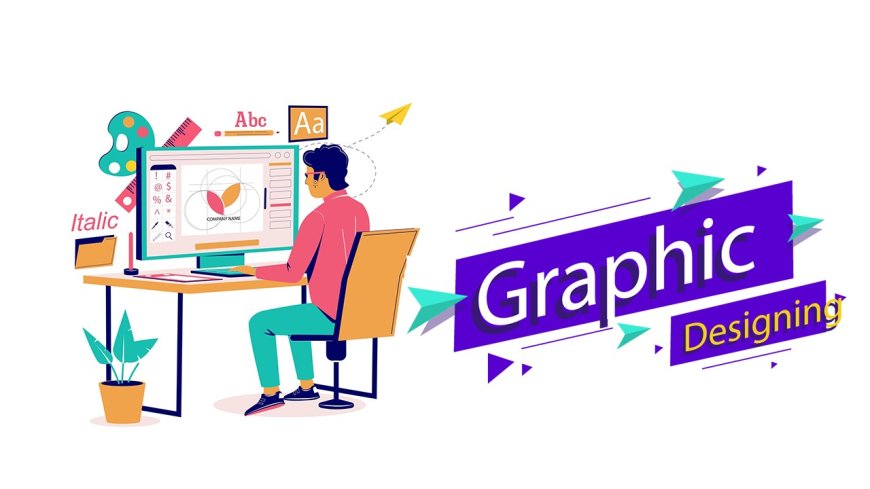The Ultimate Guide on How to Learn Graphics: From Stick Figures to Masterpieces
Ever dreamed of creating stunning graphics that make people stop in their tracks? Well, you're in luck because in this blog post, we're going to cover everything you need to know about how to learn graphics!

The Ultimate Guide on How to Learn Graphics: From Stick Figures to Masterpieces
Ever dreamed of creating stunning graphics that make people stop in their tracks? Well, you're in luck because in this blog post, we're going to cover everything you need to know about how to learn graphics!
Section 1: Embracing Stick Figures and Beyond
When it comes to learning graphics, you have to start somewhere, right? And that somewhere is often with stick figures. While they may not be the most aesthetically pleasing, they are the perfect stepping stone to more intricate designs. So, grab your pencil and paper and start doodling those stick figures like a pro!
Transition: Once you've mastered stick figures, it's time to level up your game and start experimenting with more complex shapes and designs.
Section 2: Getting to Know the Basics
Before diving headfirst into the world of graphics, it's essential to understand the basics. This includes familiarizing yourself with different design principles, color theory, typography, and layout. While it may sound daunting at first, trust me, once you get the hang of it, you'll be on your way to creating jaw-dropping graphics in no time!
Transition: Now that you have a good grasp of the basics, it's time to roll up your sleeves and dive into the world of graphic design software.
Section 3: Mastering Graphic Design Software
Graphic design software can be a bit overwhelming at first, but fear not! With a little practice and patience, you'll soon be navigating programs like Adobe Photoshop, Illustrator, and InDesign like a pro. These tools are essential for any aspiring graphic designer, so it's crucial to spend some time familiarizing yourself with them.
Transition: Now that you're comfortable with using graphic design software, it's time to let your creativity run wild and start experimenting with different styles and techniques.
Section 4: Experimenting with Styles and Techniques
One of the best ways to learn graphics is by experimenting with different styles and techniques. Try creating different types of graphics, such as logos, posters, infographics, and even social media posts. Don't be afraid to step out of your comfort zone and try new things – you never know what hidden talents you may uncover!
Transition: As you experiment with different styles and techniques, it's important to seek feedback from others to help you grow and improve as a graphic designer.
Section 5: Seeking Feedback and Critiques
Feedback is crucial in the world of graphic design. Whether it's from friends, family, or fellow designers, getting an outside perspective can help you see your work in a new light and identify areas for improvement. Don't take criticism personally – instead, use it as a learning opportunity to hone your skills and become a better designer.
Transition: Now that you've received feedback and made some improvements, it's time to showcase your work and start building your portfolio.
Section 6: Building Your Portfolio
Your portfolio is a reflection of your skills and creativity as a graphic designer, so it's essential to curate a collection of your best work. Include a variety of projects that showcase your versatility and range, from print to digital designs. Your portfolio will serve as a visual resume and help you stand out to potential clients or employers in the future.
Transition: With a killer portfolio in hand, it's time to start networking and connecting with others in the graphic design community.
Section 7: Networking and Connecting
Networking is key in any industry, and graphic design is no exception. Attend design conferences, workshops, and events to meet other like-minded individuals and expand your professional network. Join online forums and communities to share your work, collaborate with others, and stay up to date on the latest trends and techniques in the industry.
Transition: Now that you've built your network and gained some experience, it's time to take your graphic design skills to the next level.
Section 8: Continuing Education and Professional Development
The world of graphic design is constantly evolving, so it's crucial to stay on top of new trends, tools, and techniques. Consider taking online courses, attending workshops, or pursuing certifications to expand your skill set and stay competitive in the industry. Never stop learning and challenging yourself – the sky's the limit when it comes to your graphic design career!
Transition: As you continue to grow and develop as a graphic designer, don't forget to have fun and enjoy the creative process.
Section 9: Embracing Creativity and Enjoying the Process
At the end of the day, graphic design is all about creativity and self-expression. Don't be afraid to think outside the box, take risks, and push the boundaries of your creativity. Embrace the ups and downs of the creative process, and remember that every mistake is a learning opportunity. With passion and dedication, you'll be well on your way to mastering the art of graphics.
Transition: To wrap things up, let's recap some key takeaways on how to learn graphics like a pro.
Section 10: Key Takeaways on How to Learn Graphics Like a Pro
Learning graphics may seem like a daunting task, but with the right mindset and dedication, you can achieve anything. Start with the basics, experiment with different styles and techniques, seek feedback, build your portfolio, network with others, continue your education, and most importantly, have fun along the way. Remember, Rome wasn't built in a day, and neither is a successful graphic design career. So, grab your pencil, fire up that design software, and let your creativity soar!
Learn the ins and outs of graphic design in this ultimate guide. From stick figures to masterpieces, discover how to learn graphics like a pro with tips, tricks, and plenty of creativity.

 zehulu3
zehulu3